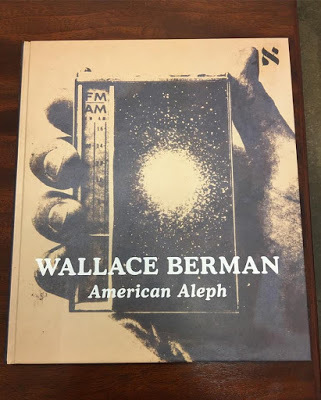Tosh Berman's Blog, page 183
May 25, 2016
Wallace Berman American Aleph L.A. Times Review by David Pagel
The Los Angeles Times May 24, 2016 by David Pagel
At Kohn Gallery, “Wallace Berman: American Aleph” paints an intimate picture of the legendary artist who was at the center of the scene when Los Angeles came into its artistic own.Beautifully organized and installed by Claudia Bohn-Spector and Sam Mellon, the deeply engaging exhibition contends that it’s high time historians stop thinking of Berman (1926-76) as a California artist and start acknowledging him for what he is: an influential American whose potent works were not only in tune with the wild times in which he lived, but who also anticipated the major transformations that would take place with the development of communication technologies. Wallace Berman's "Untitled (Multi-color Shuffle, A-4 Neil Young)," 1969, Verifax collage with acrylic. (Wallace Berman Estate and Kohn Gallery)Like Andy Warhol’s best works from the 1960s and ’70s, Berman’s pointblank pictures combine the individual attentiveness of handcrafted objects with the implacable anonymity of mechanically reproduced imagery. Where Warhol turned to silkscreen, Berman used a Verifax machine — an early version of the photocopier — to print variously sized grids of similar but distinct images.Both artists zeroed in on the content of messages and the media by which that content was conveyed. Too smart to think that the medium is the message, Berman and Warhol explored the thorny relationships between what was being communicated and how it was being communicated. Where individuals stand in relation to mass media — and one another — is their great subject.Berman’s go-to composition consists of a life-size hand (often the left) holding a small transistor radio. The face of the radio functions as a frame for images he has scavenged from newspapers and magazines.Political figures, athletes and astronauts, as well as everyday objects, mystical symbols and musicians, not to mention religious icons, animals and nudes, appear in these vertical rectangles. No bigger than an index card, each is all the more potent for being a part of a larger — and potentially infinite — group. Nearly half of the 80-plus pieces in the exhibition follow this format. Many feature single images. The largest grids are made up of 56.The experience these pieces generates recalls channel surfing, Web browsing or listening to a random selection of downloaded songs. If you want to make sense of things, you have to do that for yourself. Berman will not do it for you. Like the radio, he simply channels forces flowing through the ether. He leaves viewers free to figure out what it all means.That DIY ethos runs to the heart of his art. It can be seen in his earliest pen-and-ink drawings, from the 1940s, which pay homage to masters of jazz improvisations while registering the risk of heroin addiction.Sex and spirituality — often united in blissful instants of harmony — also go to the heart of Berman’s deeply bohemian art. That’s what distinguishes him from other artists interested in the effects — and affects — of mass-produced imagery. More cosmic than local, it shows Berman to be an American original.------------Kohn Gallery, 1227 N. Highland Ave., Los Angeles, (323) 461-3311, through June 25. Closed Sundays and Mondays. www.kohngallery.com
Wallace Berman's "Untitled (Multi-color Shuffle, A-4 Neil Young)," 1969, Verifax collage with acrylic. (Wallace Berman Estate and Kohn Gallery)Like Andy Warhol’s best works from the 1960s and ’70s, Berman’s pointblank pictures combine the individual attentiveness of handcrafted objects with the implacable anonymity of mechanically reproduced imagery. Where Warhol turned to silkscreen, Berman used a Verifax machine — an early version of the photocopier — to print variously sized grids of similar but distinct images.Both artists zeroed in on the content of messages and the media by which that content was conveyed. Too smart to think that the medium is the message, Berman and Warhol explored the thorny relationships between what was being communicated and how it was being communicated. Where individuals stand in relation to mass media — and one another — is their great subject.Berman’s go-to composition consists of a life-size hand (often the left) holding a small transistor radio. The face of the radio functions as a frame for images he has scavenged from newspapers and magazines.Political figures, athletes and astronauts, as well as everyday objects, mystical symbols and musicians, not to mention religious icons, animals and nudes, appear in these vertical rectangles. No bigger than an index card, each is all the more potent for being a part of a larger — and potentially infinite — group. Nearly half of the 80-plus pieces in the exhibition follow this format. Many feature single images. The largest grids are made up of 56.The experience these pieces generates recalls channel surfing, Web browsing or listening to a random selection of downloaded songs. If you want to make sense of things, you have to do that for yourself. Berman will not do it for you. Like the radio, he simply channels forces flowing through the ether. He leaves viewers free to figure out what it all means.That DIY ethos runs to the heart of his art. It can be seen in his earliest pen-and-ink drawings, from the 1940s, which pay homage to masters of jazz improvisations while registering the risk of heroin addiction.Sex and spirituality — often united in blissful instants of harmony — also go to the heart of Berman’s deeply bohemian art. That’s what distinguishes him from other artists interested in the effects — and affects — of mass-produced imagery. More cosmic than local, it shows Berman to be an American original.------------Kohn Gallery, 1227 N. Highland Ave., Los Angeles, (323) 461-3311, through June 25. Closed Sundays and Mondays. www.kohngallery.com
At Kohn Gallery, “Wallace Berman: American Aleph” paints an intimate picture of the legendary artist who was at the center of the scene when Los Angeles came into its artistic own.Beautifully organized and installed by Claudia Bohn-Spector and Sam Mellon, the deeply engaging exhibition contends that it’s high time historians stop thinking of Berman (1926-76) as a California artist and start acknowledging him for what he is: an influential American whose potent works were not only in tune with the wild times in which he lived, but who also anticipated the major transformations that would take place with the development of communication technologies.
 Wallace Berman's "Untitled (Multi-color Shuffle, A-4 Neil Young)," 1969, Verifax collage with acrylic. (Wallace Berman Estate and Kohn Gallery)Like Andy Warhol’s best works from the 1960s and ’70s, Berman’s pointblank pictures combine the individual attentiveness of handcrafted objects with the implacable anonymity of mechanically reproduced imagery. Where Warhol turned to silkscreen, Berman used a Verifax machine — an early version of the photocopier — to print variously sized grids of similar but distinct images.Both artists zeroed in on the content of messages and the media by which that content was conveyed. Too smart to think that the medium is the message, Berman and Warhol explored the thorny relationships between what was being communicated and how it was being communicated. Where individuals stand in relation to mass media — and one another — is their great subject.Berman’s go-to composition consists of a life-size hand (often the left) holding a small transistor radio. The face of the radio functions as a frame for images he has scavenged from newspapers and magazines.Political figures, athletes and astronauts, as well as everyday objects, mystical symbols and musicians, not to mention religious icons, animals and nudes, appear in these vertical rectangles. No bigger than an index card, each is all the more potent for being a part of a larger — and potentially infinite — group. Nearly half of the 80-plus pieces in the exhibition follow this format. Many feature single images. The largest grids are made up of 56.The experience these pieces generates recalls channel surfing, Web browsing or listening to a random selection of downloaded songs. If you want to make sense of things, you have to do that for yourself. Berman will not do it for you. Like the radio, he simply channels forces flowing through the ether. He leaves viewers free to figure out what it all means.That DIY ethos runs to the heart of his art. It can be seen in his earliest pen-and-ink drawings, from the 1940s, which pay homage to masters of jazz improvisations while registering the risk of heroin addiction.Sex and spirituality — often united in blissful instants of harmony — also go to the heart of Berman’s deeply bohemian art. That’s what distinguishes him from other artists interested in the effects — and affects — of mass-produced imagery. More cosmic than local, it shows Berman to be an American original.------------Kohn Gallery, 1227 N. Highland Ave., Los Angeles, (323) 461-3311, through June 25. Closed Sundays and Mondays. www.kohngallery.com
Wallace Berman's "Untitled (Multi-color Shuffle, A-4 Neil Young)," 1969, Verifax collage with acrylic. (Wallace Berman Estate and Kohn Gallery)Like Andy Warhol’s best works from the 1960s and ’70s, Berman’s pointblank pictures combine the individual attentiveness of handcrafted objects with the implacable anonymity of mechanically reproduced imagery. Where Warhol turned to silkscreen, Berman used a Verifax machine — an early version of the photocopier — to print variously sized grids of similar but distinct images.Both artists zeroed in on the content of messages and the media by which that content was conveyed. Too smart to think that the medium is the message, Berman and Warhol explored the thorny relationships between what was being communicated and how it was being communicated. Where individuals stand in relation to mass media — and one another — is their great subject.Berman’s go-to composition consists of a life-size hand (often the left) holding a small transistor radio. The face of the radio functions as a frame for images he has scavenged from newspapers and magazines.Political figures, athletes and astronauts, as well as everyday objects, mystical symbols and musicians, not to mention religious icons, animals and nudes, appear in these vertical rectangles. No bigger than an index card, each is all the more potent for being a part of a larger — and potentially infinite — group. Nearly half of the 80-plus pieces in the exhibition follow this format. Many feature single images. The largest grids are made up of 56.The experience these pieces generates recalls channel surfing, Web browsing or listening to a random selection of downloaded songs. If you want to make sense of things, you have to do that for yourself. Berman will not do it for you. Like the radio, he simply channels forces flowing through the ether. He leaves viewers free to figure out what it all means.That DIY ethos runs to the heart of his art. It can be seen in his earliest pen-and-ink drawings, from the 1940s, which pay homage to masters of jazz improvisations while registering the risk of heroin addiction.Sex and spirituality — often united in blissful instants of harmony — also go to the heart of Berman’s deeply bohemian art. That’s what distinguishes him from other artists interested in the effects — and affects — of mass-produced imagery. More cosmic than local, it shows Berman to be an American original.------------Kohn Gallery, 1227 N. Highland Ave., Los Angeles, (323) 461-3311, through June 25. Closed Sundays and Mondays. www.kohngallery.com
Published on May 25, 2016 07:37
May 21, 2016
"Paris Vagabond" by Jean-Paul Clébert; Introduction by Luc Sante (NYRB)
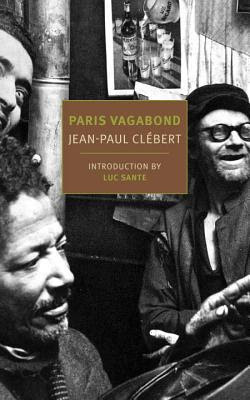 ISBN: 978-1-59017-957-4 NYRB
ISBN: 978-1-59017-957-4 NYRB"Paris Vagabond" by Jean-Pual Clébert, Foreword by Luc Sante (NYRB)
Luc Sante with his "The Other Paris" wrote one of the two ultimate books on that beloved city. He also wrote an introduction to the other essential book on the French capital that is by Jean-Paul Clébert called "Paris Vagabond." Like "The Other Paris" this book reeks of the underclass or the belly of Parisian culture, with its homeless, drunks, criminals, streetwalkers, and everything between. Encouraged by Blaise Cendrars, Clébert wrote the ultimate book in early 1950s on the culture that was not celebrated by overseas tourists in Paris. Wandering from one neighborhood to the next, Clébert recorded with a pen or pencil on newsprint, wrote about those who fell or lived in the cracks of Paris. Impressionistic as well as documentation he covers the waterfront that to some, is pure hell. Yet, it is virtually a Jean Genet love of the squalor and dirt of the Parisian underworld. Throughout the book it is illustrated with photographs by Patrice Molinard, who begin his career taking images for Georges Franju's documentary "Le sang des bêtes." His aesthetic or documentation fits perfectly with Clébert's realistic poetic prose. A superb translation by Donald Nicholson-Smith, this is the book on Paris. A total classic.
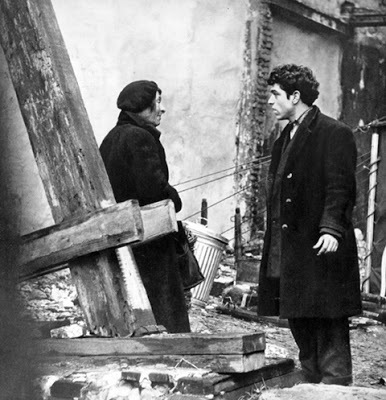
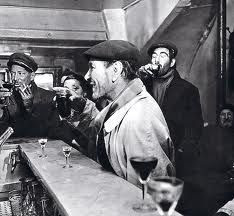
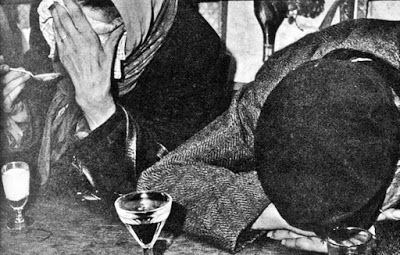
Published on May 21, 2016 15:04
"Wallace Berman: American Aleph" Installation Photographs (Kohn Gallery
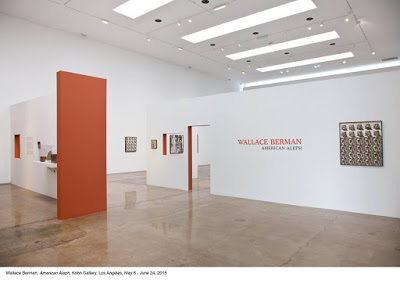 Here are photographs of the installation of the show "Wallace Berman American Aleph" at the Kohn Gallery. I except every citizen of Los Angeles,as well as the world, come to this exhibition. And of course, buy the catalog as well. Curated by Claudia Bohn-Spector and Sam Mellon. The Kohn Gallery is located at 1227 Highland Ave, Los Angeles, CA 90038. Phone no is (323) 461-3311. From May 6 thru June 25, 2016. Website: http://www.kohngallery.com
Here are photographs of the installation of the show "Wallace Berman American Aleph" at the Kohn Gallery. I except every citizen of Los Angeles,as well as the world, come to this exhibition. And of course, buy the catalog as well. Curated by Claudia Bohn-Spector and Sam Mellon. The Kohn Gallery is located at 1227 Highland Ave, Los Angeles, CA 90038. Phone no is (323) 461-3311. From May 6 thru June 25, 2016. Website: http://www.kohngallery.com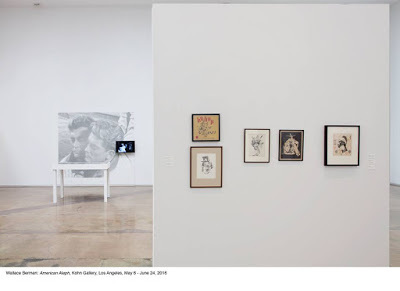
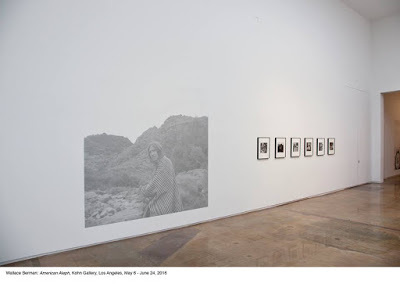
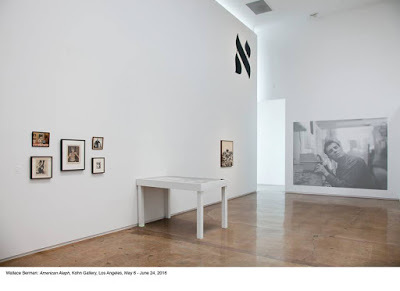
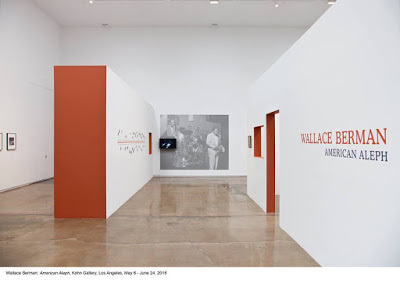
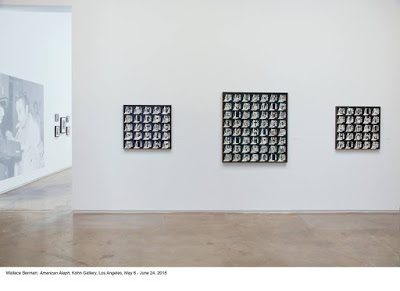
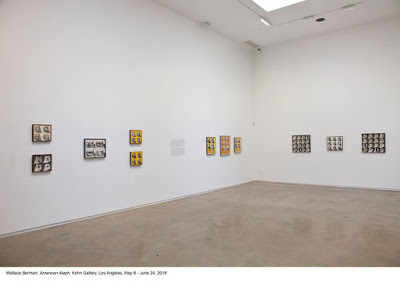
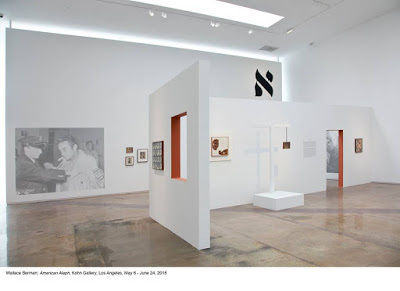
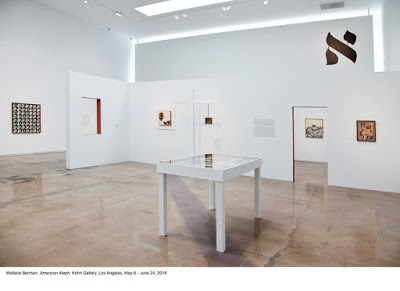
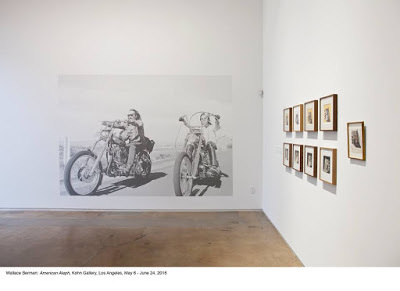
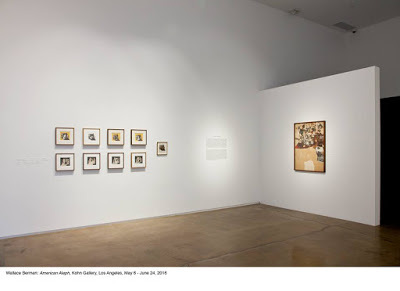
Published on May 21, 2016 10:01
May 13, 2016
"The Mysterious Underground Men" by Osamu Tezuka, edited by Ryan Holmberg (PictureBox)
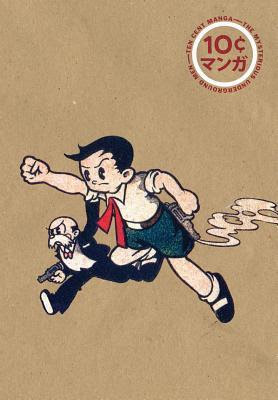 ISBN: 978-1-939799-09-8 PictureBox
ISBN: 978-1-939799-09-8 PictureBox"The Mysterious Underground Men" by Osamu Tezuka, edited by Ryan Holmberg (PictureBox)
Osamu Tezuka is not only a manga comic god, but more important, a genius with ties to the Western tradition of comics as well. "The Mysterious Underground Men" is a youth's tale of adventure, science and criminals. The beauty of this story is that it is almost like a feverish mixture of criminals and sci-fi villains - all in one story. Tezuka wrote and drew this manga in the late 1940s and what is fascinating to me is his positive attitude towards the wonder of science and what it can bring to mankind. On the other hand, and only a few years when he wrote this manga, the atomic bomb killed thousands. Yet, somewhere in his psyche, he looks up to science and the good that is human. Yet, death lurks within the narrative, and he was perhaps one of the first manga writers for kids (later he wrote for adults) who introduce characters that will tragically die in the narrative.
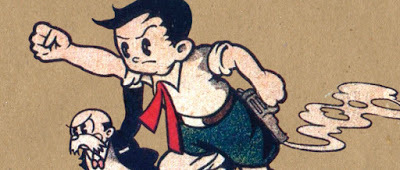
This beautifully designed book (like all titles published by PictureBox) is faithful to the tradition of the Japanese manga, but also brings in the retro look of that era into the packaging and design. On top of that, the editor Ryan Holberg, in his introduction, brings in the influence of the 1930s serial Flash Gordon as well as comics like Blondie and various Walt Disney cartoons/comics as well. Tezuka took all of this in, and in an essence, made a giant pot of soup, which is basically this manga. "The Mysterious Underground Men" is a silly plot, yet what adventure is not basically silly. It's the imagination at work, and Tezuka like the professor or engineer in this story, can cook up the ultimate adventure yarn. Excellent book.
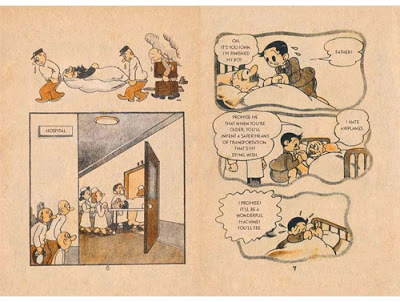
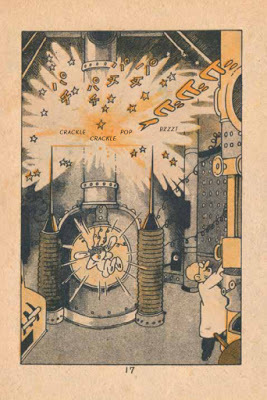
Published on May 13, 2016 17:47
Wallace Berman American Aleph Catalog available at the Kohn Gallery
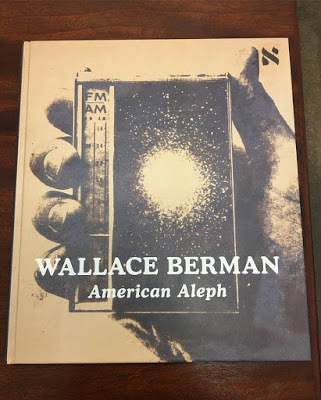
For those who want to purchase the Wallace Berman American Aleph catalog can do so, at the moment, at the Kohn Gallery. If not in Los Angeles (shame on you!) one can purchase copies here:
http://www.kohngallery.com/shop/kutg43rlfcndmp5j8x0cvqclbf16wc
Published on May 13, 2016 11:55
May 3, 2016
Wallace Berman American Aleph
Published on May 03, 2016 15:27
April 30, 2016
"On&by Christian Marclay" edited by Jean-Pierre Criqui (MIT Press)
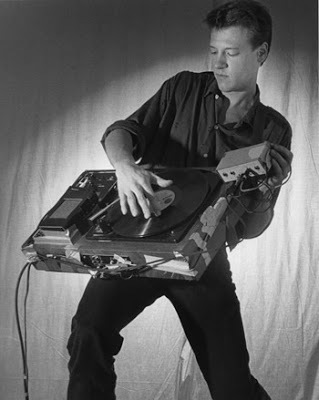
"On&by Christian Marclay" edited by Jean-Pierre Criqui (MIT Press)
There are certain type of artists that I'm drawn to, and it's usually the one's that I share an interest with - for instance music. Or to be more specific, the beauty of vinyl and its album cover. When I go to a record store, it is not only to please the ear, but also the sight. I love a well-designed or creative looking album cover. To me, that is the perfect medium for art. I suspect that Christian Marclay would feel the same way - or, at least he used to. I discovered Marclay's work through his albums "More Encores" and "Record Without a Cover." His work is conceptual as well as being a sculpture of sorts. "Record Without a Cover" strikes me as a masterpiece to any true lover of vinyl. It was sold as an album, but had no cover or anything to protect it from the elements, such as dirt, fingerprints and scratches. In other words, each album was a unique and one-of-a-kind listening experience. How would it be possible for me not to love this album, and therefore, the artist?
"On&by Christian Marclay" is a book length study on his work with vinyl, recordings, film, sculptures and photography. Editor Jean-Pierre Criqui has put together a fantastic collection of essays by superb writers such as Dennis Cooper, David Toop, Michael Snow, Rosalind Krauss, Wayne Koestenbaum and others. The high quality of writing talent focusing on one writer can be the sole reason for getting this book - but also the first half is a series of interviews with Marclay by various writers as well. In detail, one obtains a lot of information on Marclay's work methods as well as placement in 20th century art and all the byproduct of that world - specifically music and music making. The book takes the reader to all his major works - including the über-popular film/video project "The Clock." The film lasts 24 hours, and uses real time as you watch scenes from films that use a clock or mention time within the scene.
Marclay is a wonder to me, because he plays as he works - and his work, on the surface, seems simple, but is actually quite complexed, due to his skill and taking chances, but also the audience's or viewers love for vinyl and their own awareness of time and now it passes. If I have to be a fuss-butt, I would say that this book needs examples of Marclay's art -there are no illustrations whatsoever. Still, this book is essential, and Marclay is truly a great artist.
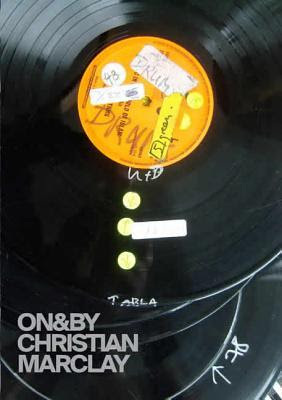 ISBN: 978-0-262-52661-6 MIT Press
ISBN: 978-0-262-52661-6 MIT Press
Published on April 30, 2016 15:36
April 25, 2016
"In The Café of Lost Youth" by Patrick Modiano - Translated by Chris Clarke (NYRB)
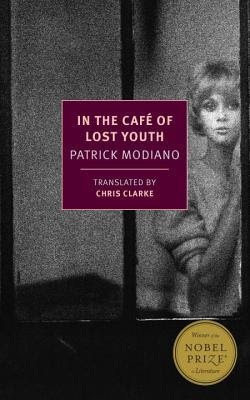 ISBN 978-1-59017-953-6 NYRB
ISBN 978-1-59017-953-6 NYRB"In The Café of Lost Youth" by Patrick Modiano / Translated by Chris Clarke (NYRB)
As much as possible, I try to read every book - fiction and non-fiction on the city of Paris, especially if it took place in the 1950s. Of my interest, the post-war years are the most interesting to me. Great films, wonderful music and really interesting figures emerge from Paris during that time. I suspect that Patrick Modiano feels the same way about Paris, because "In The Café of Lost Youth" is very much a love letter (or love novel) to Paris - especially the nighttime of Paris. Where the characters wander around various neighborhoods and cafés and occasionally listen to lectures. I do not even know for sure, but I suspect that the novel is based on Ed van der Elsken's book of photos "Love on the Left Bank" that tells a tale of a girl who wanders into the world of the Letterists/Situationists. There is likewise a character that is based on Guy Debord, but not overly him, but an "ideal" version of Debord.
I like the novel for all the above reasons, but it is not as good as Michèle Bernstein's novel "All The King's Horses" or "The Night." She was married to Debord, and her fiction can be read as 'maybe' a memoir. Nevertheless, Modiano is sort of the after-effect of such literature by Bernstein. His, is a very romantic narrative - and there are at least four running narratives on the same girl, "Lluki" who is both a wanderer as well as a bohemian adventurer in the night life of Paris. If nothing else, it makes one wish to purchase an one-way ticket to Paris.
Published on April 25, 2016 14:43
April 18, 2016
"I Should Have Stayed Home" by Horace McCoy
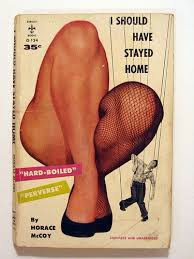
"I Should Have Stayed Home" by Horace McCoy
There is really no such thing as a bad Hollywood or noir novel. If it's well-written, and tells the tale, it rarely fails. For me, there are usually the exceptional and then there is the enjoyable. "I Should Have Stayed Home" is very enjoyable, but clearly to me, not exceptional. The novel was originally published in 1938, and it does capture that moment in time, with respect to how people see the movie world. Everything else in the world was shit, yet the images of the cinema world were like medicine for those who were spiritually ill or suffering from the effects of the great depression. McCoy's novel clearly expresses his time, but yet for me, it lacks poetry, which makes a noir novel great.
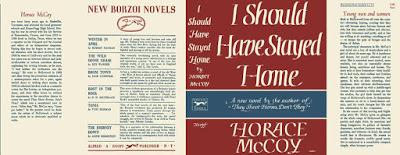
The story is about a farm boy who comes to Hollywood to become, not an actor, but a star. He lives with Mona, who is also an star-want-to-be, but is also quite realistic in her chances in becoming such a professional. On the other hand, Ralph, is quite blind to the world around him, and therefore is an innocent floating in the shit that was / is Hollywood. In the hands of someone like David Goodis, this would have been a trip to the underworld, but McCoy to me, is almost a nay-nay person, wagging his finger towards the Hollywood climate.
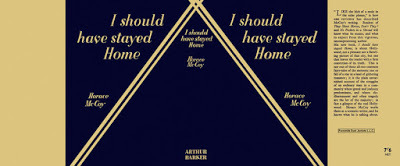
There are those who are in, and those outside the Hollywood system or factory. There is a political element, in that it is a world that exploits its people, and I sense McCoy is of that thinking that the system is pretty horrible. There is a strong message that Hollywood is very much of an opium to the great population out there. This may be the case, but it is also like any other business that produces goods for the population, and to be fair to McCoy, I think he conveys that very well. The problem I have with the book is that I find Ralph a huge bore. I kind of hate him, because he's so simple, and on top of that, he's a southern racist. He's a little lamb who lost his way, and he lost in a damned world.
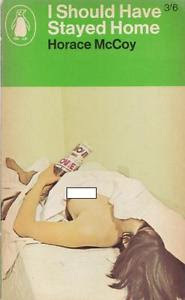
He does come upon good people - for instance Mona, but also one of the producers, who is actually very kind in letting him know that he will never ever make it in Hollywood. Ralph, due to his (stupid) nature, cannot accept that fact. I think reading this novel has to be a total experience than if I actually read the book in 1938. The mind-set of the readers at the time, were going through harsh times, so the promise of a "Hollywood" must have been a given thing or the end of that rainbow, which promises a greater future. McCoy pops that balloon. For me, "Dirty Eddie" by Ludwig Bremlmans is a much better book on Hollywood morals and decadence. Yet, this is a wonderful read, but just not essential for me, with respect to the "Hollywood" novel.
- Tosh Berman
Published on April 18, 2016 14:48
April 14, 2016
Bas Jan Ader - Death is Elsewhere" by Alexander Dumbadze
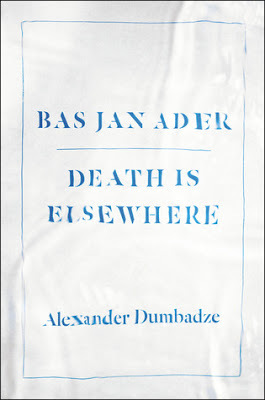 ISBN: 978-0-226-038537 The University of Chicago Press
ISBN: 978-0-226-038537 The University of Chicago Press"Bas Jan Ader: Death is Elsewhere" by Alexander Dumbadze (The University of Chicago Press)
I think partly due to the deaths of David Bowie and Tony Conrad, I felt great sorrow reading this book on the artist Bas Jan Ader. I only came upon his work maybe 20 years ago, which is odd, because he was very much of a Los Angeles based conceptual artist. A lot of work deals with space and falling - meaning that gravity itself pulls you down. On one level, he is sort of a Buster Keaton figure, but instead of laughter, his work is profoundly sad. He has documented his "performances' in photographs as well as on video/film.
"Death is Elsewhere" is half biography and the other part is a critique of his work. It's fascinating to know about his Los Angeles existence, and how he mixed in with other artists of that time and place. He had one foot in Holland, and the other in Los Angeles. There is something very European about his work. Yet, I can see the Los Angeles side of his work as well. Place or location is always interesting or important. It is not actual locations, but the state of his mind or the state of his work and how that works within an American or Europan context. The author Alexander Dumbadze does an excellent job in placing Ader's work in the context of 1970s America as well as noting the mysterious aspect of his work. On one level, it is quite emotional, due to his death by being lost in the sea. For an art project (or was it?) he planned to take a small sailing boat from the east coast of the U.S. to Holland or Europe. Which sounds crazy, but Ader was an experienced man of the high seas, so if anyone could have done this, he could. Sadly he disappeared in the Atlantic Ocean.
What I find interesting about his work, is that it does remind me of Keaton, who I think is the great American artist of the 20th century. I don't think Ader meant to address or comment on Keaton's method of working with machine and weather / nature, but there are similarities with Ader dealing with gravity or fighting against the urge of gravity. So, that alone is quite moving - yet, we know he died a very young man, and therefore we're just capturing a moment of time of this artist. He should have a longer career or life - because the work, although it hints of failure or even death, I don't think that is what his work is really about. I think he was working on something much longer or long-term, but alas, nature took him perhaps by surprise. Fascinating critique/bio on what I think is an important artist.
Published on April 14, 2016 19:52

